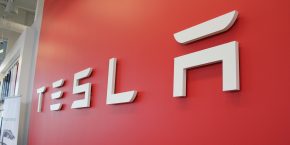

Autonomous and semi-autonomous driving systems are already getting pretty good under favorable driving conditions, but one of most people’s main concern is about how a self-driving car would handle heavy rain or snow.
Although not recommended, Tesla’s Autopilot can already handle snow to a certain degree, but several systems in development are focusing on especially nailing winter self-driving. Ford recently released a video featuring what it calls “Snowtonomy.”
While Tesla’s Autopilot is equipped with a sensor suite consisting of cameras, a radar and sonars, Ford’s self-driving car prototype is powered by a lidar system, not unlike Google’s prototypes.
Cameras are getting better every year and computer vision technology is improving at an impressing rate, but lidars, although more expensive and heavier on the data (Ford says its car can collect and process more data in an hour than the average person uses in mobile-phone data in 10 years), are especially precise.
Ford says that its sensors are so powerful, they can even identify falling snowflakes and raindrops.
Here is Ford’s feature:
https://youtu.be/IY7O_-nWUbk
And here’s a Model S owner demonstrating Tesla’s Autopilot operating in the snow:
FTC: We use income earning auto affiliate links. More.





The power of the sensors aren’t that important. Determining what’s dangerous is.. Just demanding of computer power to determine where snowflakes are..
That makes no sense whatsoever. If the sensors don’t provide enough information in the first place the computing power is irrelevant. You have to have both.
Exactly. If you dont feel anything in the seat of your pants or see anything (both are sensors when driving a car), you can not make a decision. Same process here in self driving cars.
What I mean is that the computer doesn’t need to know where every snowflake are.. the best way to design a system is to make it discard everything not important. Imagine if you would look at all snowflakes you would not pay attention to the road. No focus on where to drive, if there is something that can be a problem and act accordingly.
One problem on the Model S is the placement of the radar sensor. It gets covered in ice and snow in no time and you lose both cruise control and emergency braking system. This has been a big problem for me this winter, cleaning it in snowy conditions would give me maybe 2km of cruise and then no radar.
Isn’t it heated? Other manufacturers (BMW at least) use heated sensors for the same reason.
It is heated, but it is recessed into the lower bumper so while the snow impacting it melts it starts building a icebridge from the edges and then it is covered.
This is what most of us call “easy snow”. Not very impressive yet.